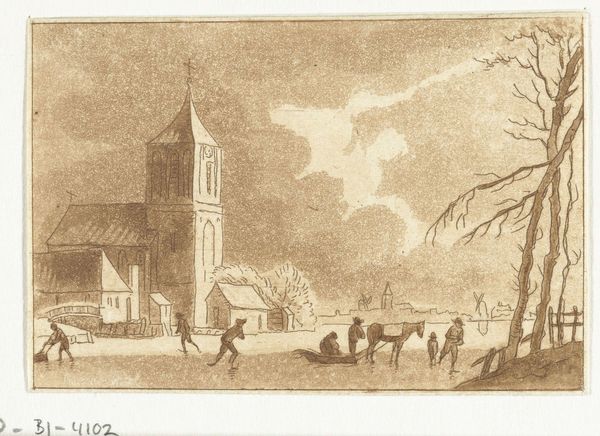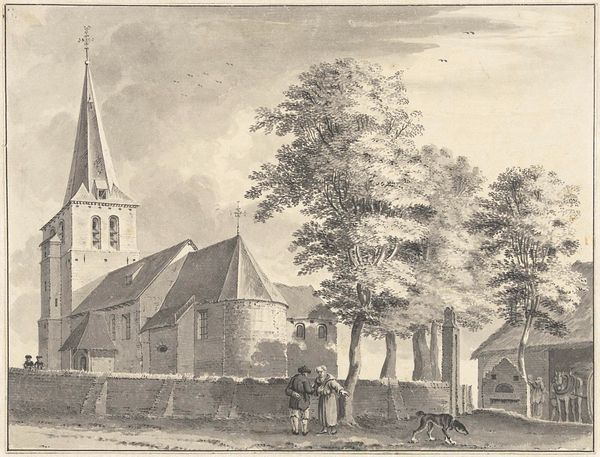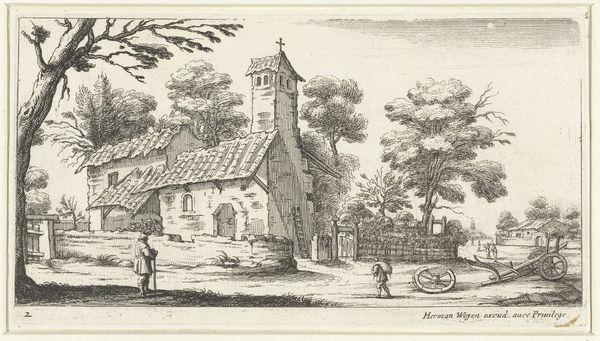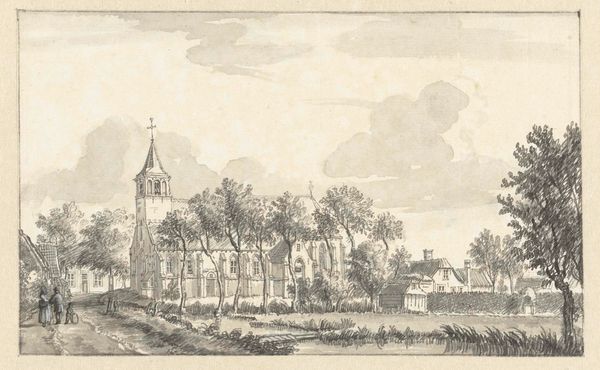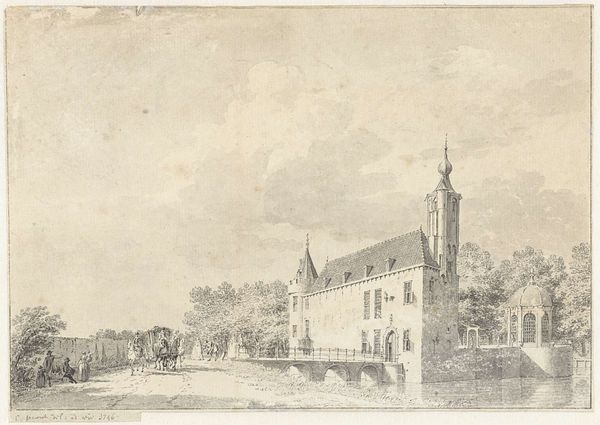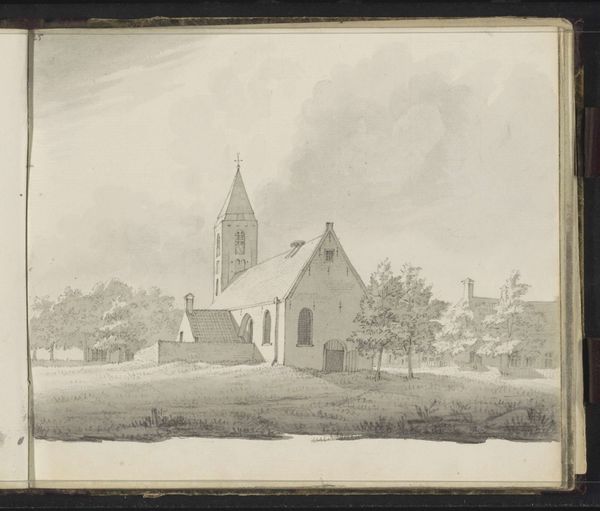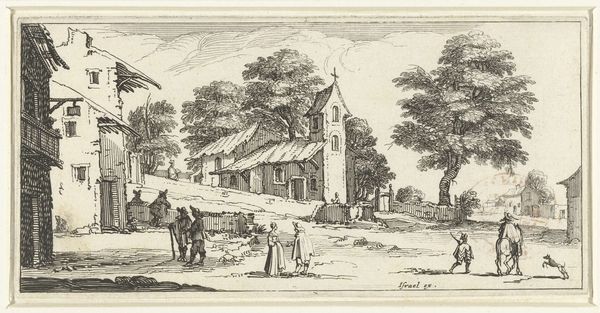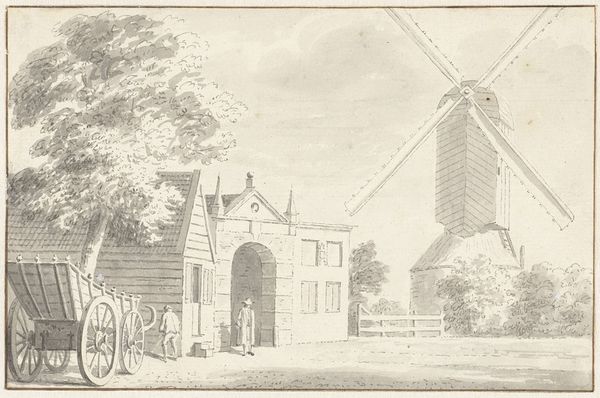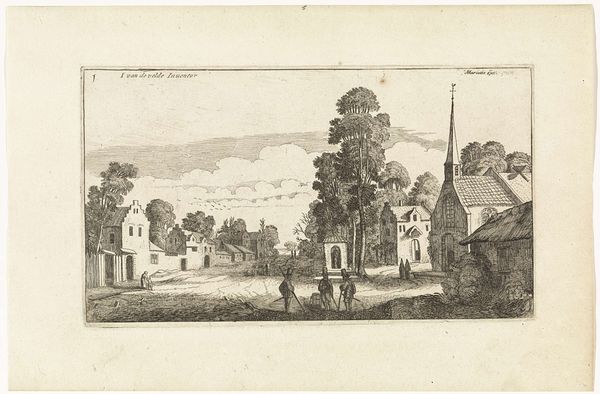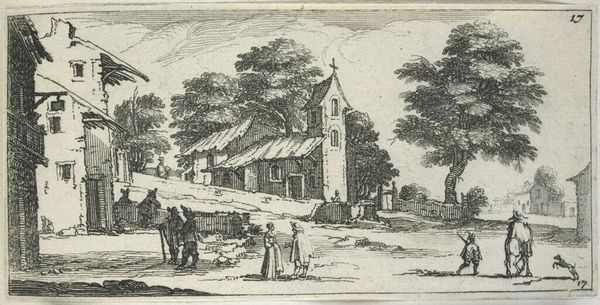
drawing, ink, architecture
#
drawing
#
dutch-golden-age
#
landscape
#
ink
#
15_18th-century
#
architecture
Dimensions: height 48 mm, width 75 mm
Copyright: Rijks Museum: Open Domain
Editor: This drawing, titled "Dorpskerk," was created in 1776 by Paulus van Liender, and the artist used ink. The sepia tones give it a nostalgic feel. It's a simple village scene, but the church is undeniably central. What symbols do you think resonate most strongly in this artwork? Curator: The village church. It is interesting to think about churches in Dutch Golden Age landscapes. Are they places of sanctuary? Or structural features? They serve both functions and suggest a stable moral compass within a community. It seems Liender intended us to consider the visual impact of this sacred symbol. Do you see how its tall spire contrasts with the earthly, horizontal plane of the landscape? Editor: Yes, the height really draws the eye upwards. There's also a sort of congregation of figures in the center near a horse and carriage. Curator: Precisely! This visual weighting could point towards an enduring social hierarchy – suggesting established order while also speaking to the communal gathering in spaces near to worship. Think also of the psychology of enclosed space: church-as-container is safety/restriction, belief/dogma, hope/guilt. How do these oppositional forces give shape to culture? Editor: That makes me think about the two men sitting under a tree in the corner... Curator: A break from convention? This tension creates interest: civilization is constructed in opposition to untamed nature; morality exists alongside individual transgression, and sacred observance and mundane commerce cannot be divorced entirely from each other. In this landscape drawing, can those dualities be resolved? Editor: The artist seems to subtly address these themes without preaching. It's been a real eye-opener to consider these oppositional elements! Curator: Indeed! This reminds us to remain receptive to cultural and historical undercurrents within simple architectural drawings.
Comments
No comments
Be the first to comment and join the conversation on the ultimate creative platform.
